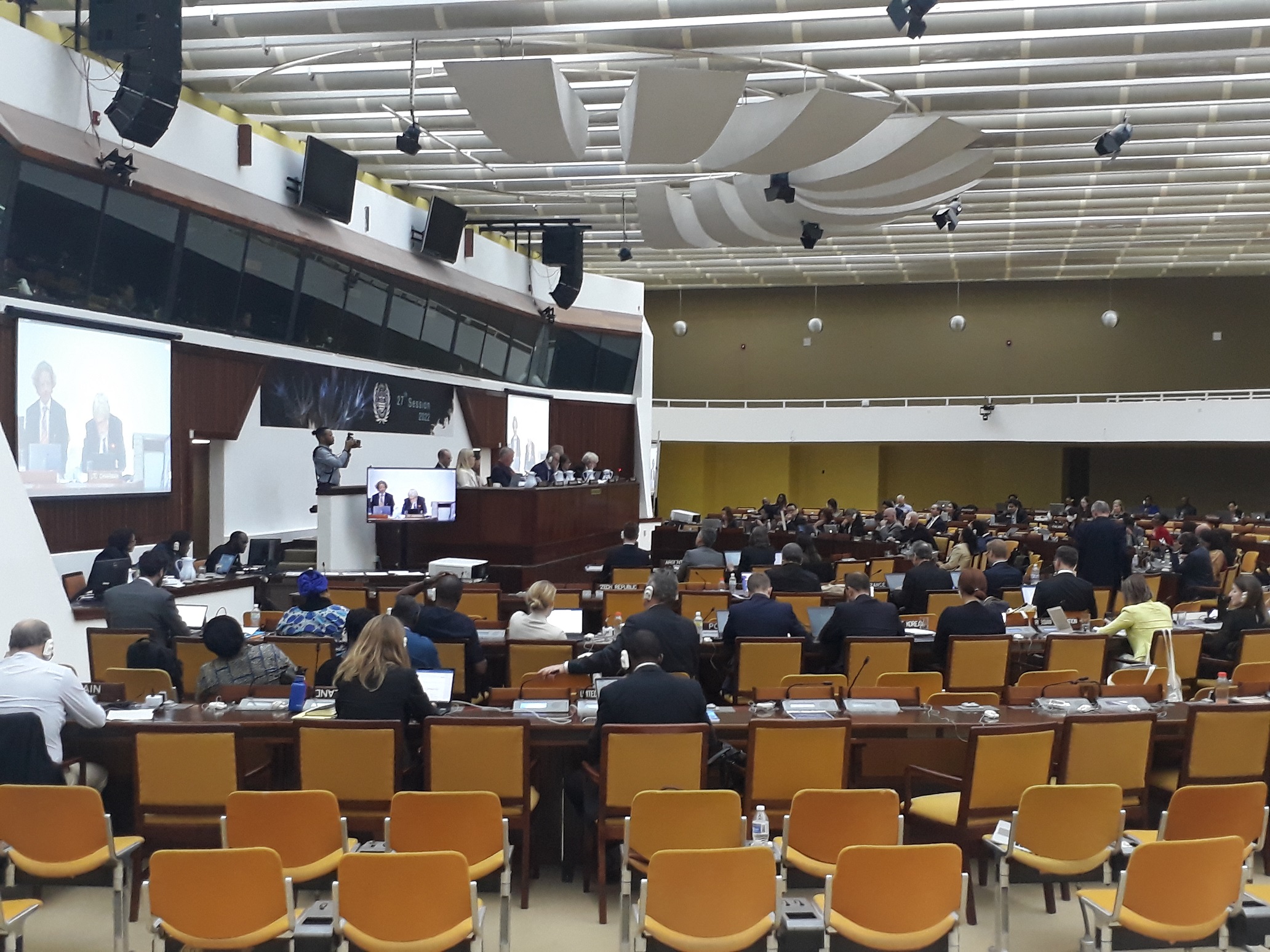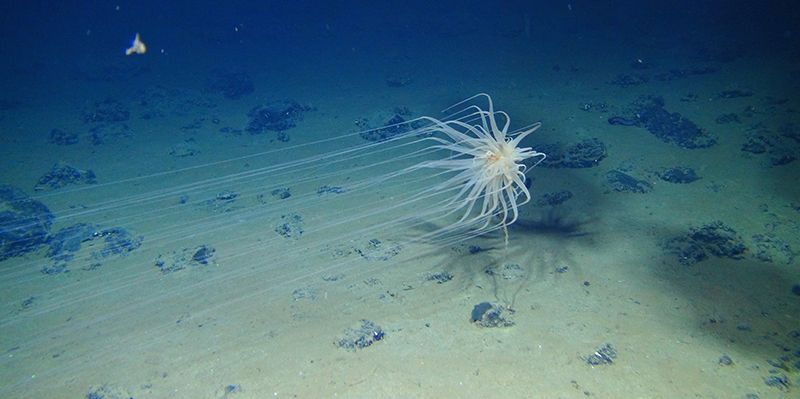Commentary by Pradeep A. Singh (Fellow, Institute for Advanced Sustainability Studies, IASS Potsdam) and Maila Guilhon (Research Associate, Institute for Advanced Sustainability Studies, IASS Potsdam)
Considering the potential of deep-sea mining activities to cause harm to the marine environment, the International Seabed Authority (ISA) requires exploration contractors and proponents for exploitation contracts to undertake an environmental impact assessment (EIA) and submit an environmental impact statement (EIS) resulting from an EIA. In the case of activities during the exploration phase that are capable of causing significant environmental harm, such as test mining projects, an EIS should be submitted by a contractor at least 12 months in advance of starting any of such activities. For exploitation activities, which will obviously cause significant environmental impacts, it is anticipated that the presentation of an EIS, together with other documents comprising the ‘Environmental Plans’, will be a requirement when submitting an exploitation application. The authors have comprehensively discussed the topic of environmental impact assessments and current practices at the ISA, which provides the basis for the following discussion, elsewhere. This commentary will concentrate on the former, namely, the EIA/EIS process for exploration activities such as test mining. The EIA/EIS process during the exploration phase is currently covered via document ISBA/25/LTC/6/Rev.2 (“Recommendations for the guidance of contractors for the assessment of the possible environmental impacts arising from exploration for marine minerals in the Area”) issued by the ISA’s Legal and Technical Commission (LTC) in July 2022. An instrument of the ISA that has been revised and reissued by the LTC at least six times in twenty years, this version from 2022 replaced the previous version that took the form of document ISBA/25/LTC/6/Rev.1, issued by the LTC in March 2020, and is likely to undergo further revisions in the near future.
As of the present date, a total of four EISs have been submitted by exploration contractors to the ISA. Two EISs were submitted in 2018, one by the Institute for Geosciences and Natural Resources (BGR), sponsored by Germany and another by the Global Sea Mineral Resources (BGR), sponsored by Belgium. In 2020, the Ministry of Earth Sciences (MoES) of India submitted an EIS for the testing of a nodule collector in the Central Indian Ocean Basin. Lastly and more pertinent for this commentary, Nauru Ocean Resources Inc. (NORI), sponsored by the Republic of Nauru, submitted an EIS for the testing of a nodule collector on 30 July 2021. NORI in collaboration with Nauru then conducted a stakeholder consultation on its EIS and submitted an amended EIS on 1 March 2022. Upon reviewing the amended EIS in March 2022, the LTC requested for more information, specifically a more substantive monitoring plan. The contractor submitted a separate document with the monitoring plan on 2 May 2022. Upon evaluation in July 2022, the LTC decided that it was not able to recommend the inclusion of the EIS to the contractor’s programme of work, specifically highlighting that the EIS and monitoring plan lacked sufficient detail with regard to overall sampling design and monitoring specifications. On 1 August 2022, the contractor provided additional details to the LTC. The working group of the LTC that was charged to review the EIS discussed the matter on several occasions in August 2022 and eventually found that the further information provided was adequate. Pursuant to the request of the Chair of the LTC, the recommendation of the working group was placed under the silence procedure (for three days) for adoption by the LTC as a whole. There being no objections from the members of the LTC during the silence period, the LTC recommendations adopted on 2 September 2022 were communicated to the Secretary-General and the contractor. Nearly two weeks later, an ISA press release confirmed this and the Chair of the LTC provided an update to the Council in November 2022.
Numerous shortcomings in the current approach undertaken at the ISA with respect to the EIA/EIS process for test mining projects during the exploration stage are apparent. At the outset, it is important to recognize the legal status of the LTC Recommendations in that they are non-binding in nature. Although contractors are expected to exercise best endeavors and comply with the matters laid out therein, there are no clear legal implications about what happens when there are any instances of non-compliance. In this respect, there appears to be a lot of ambiguity and some room for discretion on the part of contractors, such as the following.
- Requirements relating to stakeholder consultation throughout the EIA/EIS process is perhaps the most ambiguous and confusing aspect in the document ISBA/25/LTC/6/Rev.2 (particularly as spelled out in paragraph 41 therein). In essence, while there seems to be an assumption in the current version that the contractor would have carried out some sort of stakeholder consultation during the EIA process leading up to the preparation of the EIS, there is no explanation relating to what would amount to satisfactory consultation. As compared to the previous version (which envisaged the scenario where stakeholder consultation has not taken place), there are also no contingencies provided for the situation where the contractor has not conducted stakeholder consultation. In addition, while contractors are asked to provide details on the nature of stakeholder consultations that were conducted and the comments that were received, there is very little in the document that compels the contractor to provide on how comments were dealt with and whether responses were given to stakeholders. In essence, critical comments may have been made and ignored, and the ISA and its stakeholders would not have any means to verify this. Moreover, while some explanations are provided for in Annex I of the document (titled “Explanatory commentary”), these appear to be key procedural steps that should feature in the main text of the document and not relegated to an annex (which is not declared to be an integral part of the document) where contractors may claim the benefit of the doubt.
- Irrespective of whether or not there has been any or satisfactory stakeholder consultation prior to the submission of the EIS to the ISA, there does not appear to be any specific provisions in the document requiring or allowing the LTC to invite comments on the EIS submitted to the ISA (although the EIS will be posted on the website of the ISA – para. 68). This is quite problematic, because stakeholders should be given the opportunity to comment on the output of the contractor’s EIA process, i.e. the EIS submitted to the ISA. Even in cases where there has been some form of stakeholder consultation before, stakeholders should be given the chance to verify changes and evaluate if its content is now improved and adequate. In any case, the LTC would certainly stand to benefit from having direct comments that would help the LTC to make a more informed decision. The LTC has the “possibility of requesting the views of external experts” but this is not further explained, thereby leaving significant room for discretion on the part of the LTC and that also gives rise to questions of transparency as to who gets invited to comment as external experts and how those comments are received and addressed.
- The document provides that the LTC shall review the EIS for “completeness, accuracy and statistical reliability” (para. 41.c) but does not explain what this means, including whether or not it includes “effectiveness”, i.e. the need to evaluate whether the effective protection of the marine environment from the harmful effects of the planned test mining activities.
- There are no provisions to say that the contractor shall not proceed with its test mining project before it receives the “green light” from the ISA. This is problematic, because there seems to be an expectation that the entire process will take approximately 12 months from the date the EIS is first submitted, and with that, an assumption that the entire process is more of a formality to “rubber stamp” the EIS as opposed to a stringent evaluation process.
- The document prescribes that the LTC could decide to not recommend the incorporation of the EIS into the programme of activities of the contractor, upon which, the contractor has the option and “may opt to resubmit” (para. 41.f) the EIS. The use of the term “recommendation” here may be problematic, given the non-binding nature of the document itself. Indeed, what the document fails to make explicit is that under no circumstances shall the contractor proceed with any part of the test mining project without a positive recommendation from the LTC and an express authorization from the ISA. Additionally, there is a lot of room of discretion when an EIS is resubmitted, including with respect to revised stakeholder consultation “if required” by the LTC. If this process is not clarified and regulated more stringently, this may encourage contractors to submit poor EISs at the first instance.
- It is unclear why the LTC makes recommendations to the Secretary-General regarding the incorporation of such an EIS into the contractor’s programme of work (para. 41.e). This is problematic for several reasons. First, the LTC is a subsidiary organ of the Council, not the Secretariat. Second, it is not clear whether the role of the Secretary-General is merely an administrative one, i.e. whether the Secretary-General is bound to follow the recommendations of the LTC or whether there is room for discretion on the part of the Secretary-General to ignore that recommendation. It would appear that the role of the Secretary-General is merely an administrative one, i.e. to notify the contractor of the outcome of the LTC’s review, but this should be made clear in order to avoid any potential misapprehension.
Apart from that, there are also issues with the EIS decision-making process at the LTC. For instance, the use of the silence procedure, in particular, for such a critical matter is arguably questionable. Such circumstance occurred with respect to the evaluation of additional information requested by the LTC to the EIS submitted by NORI. The silence procedure is more suited for administrative matters, and in any case, must be used sparingly. It is not clear why a virtual meeting could not have been accommodated for members to discuss the matter of evaluating additional information provided for the EIS submitted by NORI. In fact, the rushed manner in which the decision was adopted gives the impression that the LTC may have been mindful of exceeding the 12-month period from the date of which the EIS was submitted or moved by the consideration that the contractor had already made arrangements for the test mining project to commence and was ready to proceed. Arguably, these are extraneous considerations and it would be concerning if these factors had any bearing in the process that was used. Again, it is unclear why the LTC could not inform the contractor that more time was required for it to arrive at a decision.
On this note, it is worth pointing out that there has been very little transparency in the process from the time the LTC requested more information (including a monitoring plan) from the contractor. As of early December 2022, the revised EIS and monitoring plan that the LTC considered and recommended to be included in the contractor’s programme of work has not been made public on the ISA’s website. It is welcomed that the LTC requested for more information on this occasion, which it had not done with previous EISs submitted to the ISA (and were arguably also inadequate), but the process adopted in this case leaves much to be desired.
In light of the above, we now turn to provide some specific suggestions for improvement, which are as follows.
- The status of the LTC Recommendations, which are currently non-binding and in the form of a guidance document, should be revisited. In particular, the Council should take this up and consider regulating the matter of test mining during exploration and the EIA/EIS process through the development of specific rules, regulations or procedures pertaining to exploration. Such measure would ensure a more standardized procedure, helping to level the playing field and avoiding potential allegations of biased or improper evaluations.
- While the LTC may develop its own rules of procedure when evaluating and deciding upon an EIS, including the use of the silence procedure and on consulting external experts, it would be appropriate for such procedural rules to be approved by the Council pursuant to Article 163(10) and (11) of the Convention. This would also help avoid the situation where the LTC keeps revising the document internally from time to time due to concerns raised by Council members and other members and stakeholders of the ISA.
- Ideally, all outcomes of consultations conducted by the contractor or sponsoring state should be disclosed to the LTC and made public, including the actual comments that were received and responses made to comments. Contractors should be required to give reasons where it disagrees or ignores any comments. Guidance should also be provided on what is considered satisfactory stakeholder consultation, and it should be explicitly provided that the ISA will not entertain an EIS where stakeholder consultation is deemed inadequate.
- Once an EIS is received by the ISA and while undergoing initial perusal by the ISA, the ISA should invite an additional round of stakeholder comments. All received comments shall be published on the website of the ISA, and alongside the initial comments of the LTC, will then be forwarded to the contractor for a response. At this stage, the contractor may consider to revise the EIS. Thereafter, considering the comments that were received and the responses given by the contractor or revised EIS, the LTC should conduct a public hearing (using virtual means) to allow any interested parties and the contractor to make any final representations. Premised on that, the LTC shall continue and finalize its review of the EIS, which will then take the form of recommendations (which should be elaborate and well-reasoned as well as include any divergences of opinions) on whether or not the EIS should be incorporated into the contractor’s programme of work.
- Given that the LTC is a technical body that is subsidiary to the Council (and not the Secretariat), it would be more appropriate for the LTC to make appropriate recommendations to the Council on whether or not an EIS should be incorporated into the contractor’s programme of work, which shall then decide accordingly.
- The power to reject an EIS should be made explicit, as should it be made explicit that a contractor may not proceed with a planned test mining project without permission. In this respect, the 12-month period should be regarded as merely indicative and contractors should be put on alert that circumstances may require more time.
In ending, we acknowledge that the ISA is now focused on developing regulations for future exploitation activities. However, there are many regulatory deficiencies in the EIA/EIS process within the existing exploration phase that would require the attention of member states to address. In addition, test mining is mining, and consequently, the approach for the EIA/EIS process during exploration and pre-exploitation should be streamlined. Hence, revisiting the EIA/EIS requirements during exploration will also be pertinent when it comes to the EIA/EIS process that exploration contractors will have to conduct and prepare when submitting an application for exploitation. Indeed, many of the shortcomings highlighted here are also apparent in the draft exploitation regulations and the draft versions of the relevant standards and guidelines expected to accompany those regulations. We hope that the suggestions provided here will be given due attention as the ISA strives to develop a robust and comprehensive regime for the mineral resources of the Area on behalf of humankind as a whole.
Featured Image: The ISA Council discusses NORI’s EIS at the 27th Session of the Authority. Photo by Pradeep Singh.




